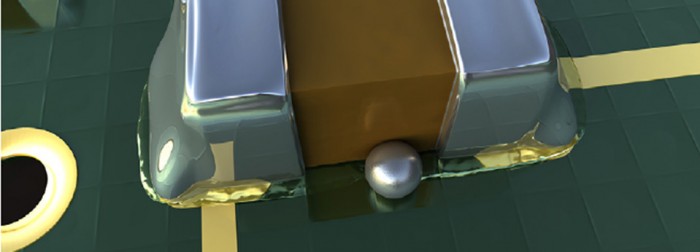Folks,
It is hard to believe, but I have been blogging now for over 8 years. In all of that time, the most popular topic by far has been the calculation of alloy densities. Many people are troubled by the required equation. At first blush it doesn’t seem logical. I have derived it, but here is an effort to try and make it more intuitive.
A reader wrote the following, which inspired my explanation that follows.
Craig writes:
Why do we calculate the theoretical density of an alloy by using the formula of:
1/Da = x/D1 + y/D2 (binary) or
1/Da = x/D1 + y/D2 + z/D3 (ternary) AS OPPOSED to multiplying the individual metals' densities by their percentages in the alloy and adding them together ? I thought the density of an alloy would be analogous to a weighted average of the densities of the metals in the alloy. Obviously, that is wrong, but I don’t understand why?
The reason you have to use the non-obvious formula is that density is given as mass/volume. So there are two quantities to be concerned with, and one is inverse (i.e. volume is 1/volume in the density formula). So you have touse the equations above, or you will be in error.I derived these equations in a previous post. However, many people do not find the result intuitive.
Here is, hopefully, a more intuitive example. Let's say, for some strange reason, you were interested ininverse height. So let's say John is 5 feet at his shoulders, or 1/5 inverse feet. His girlfriend Kathy is 5 feet tall, also 1/5 inverse feet. Kathy stands on John's shoulders. How manyinverse feetis their total height? The tendency would be to say they are 1/5 +1/5 = 2/5 inverse feet. But we know that when Kathy stands on John’s shoulders they span 10 feet, so they must be 1/10 inverse feet. So, to calculate their height in inverse feet, we need to use:
1/IFT = 1/John IF + 1/Kathy IF = 1/(1/5) +1/(1/5) = 10
IFT = 1/10
Note: (IFT = Inverse Feet Total)
The same is true for density, since density = mass/volume (inverse volume is like inverse feet).
Another engineering example is electrical resistivity and conductivity. If the resistance of one wire is 2 ohms, and another is 1 ohm, and we connect them in series, the total resistance is 3 ohms. However, if we consider conductivity, one wire has a conductivity of 0.5 mho and the other 1 mho. Again, to get the total conductivity we don’t add the conductivities, we must use:
1/Ctotal = 1/C1+1/C2 = 1/0.5 + 1/1 = 2+1 = 3. So Ctotal = 1/3 mho.
I hope this helps.
Cheers,
Dr. Ron



